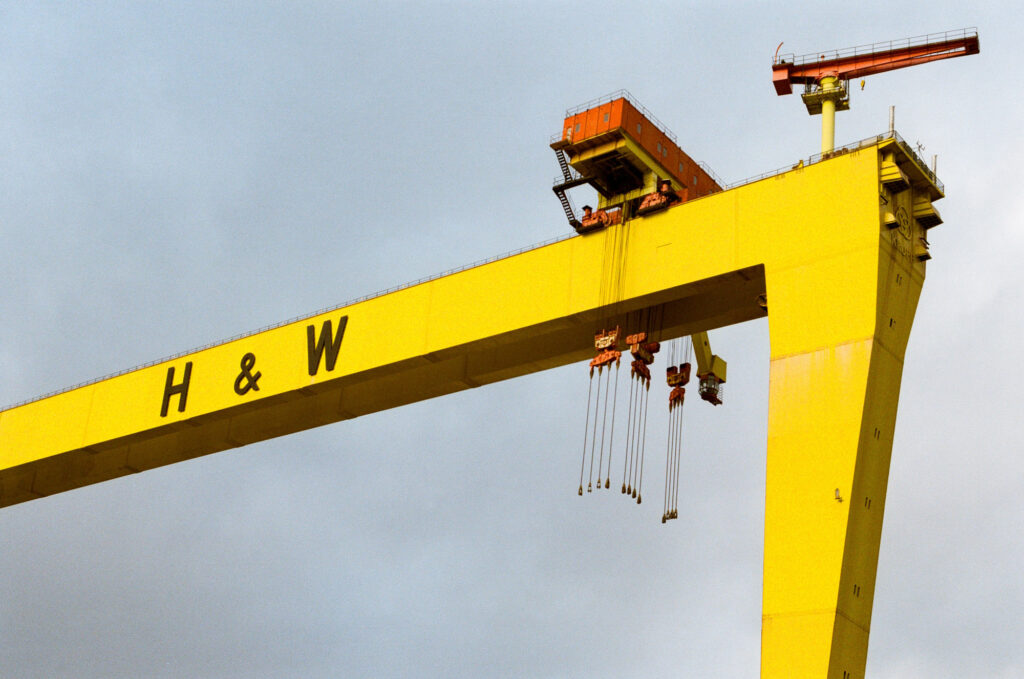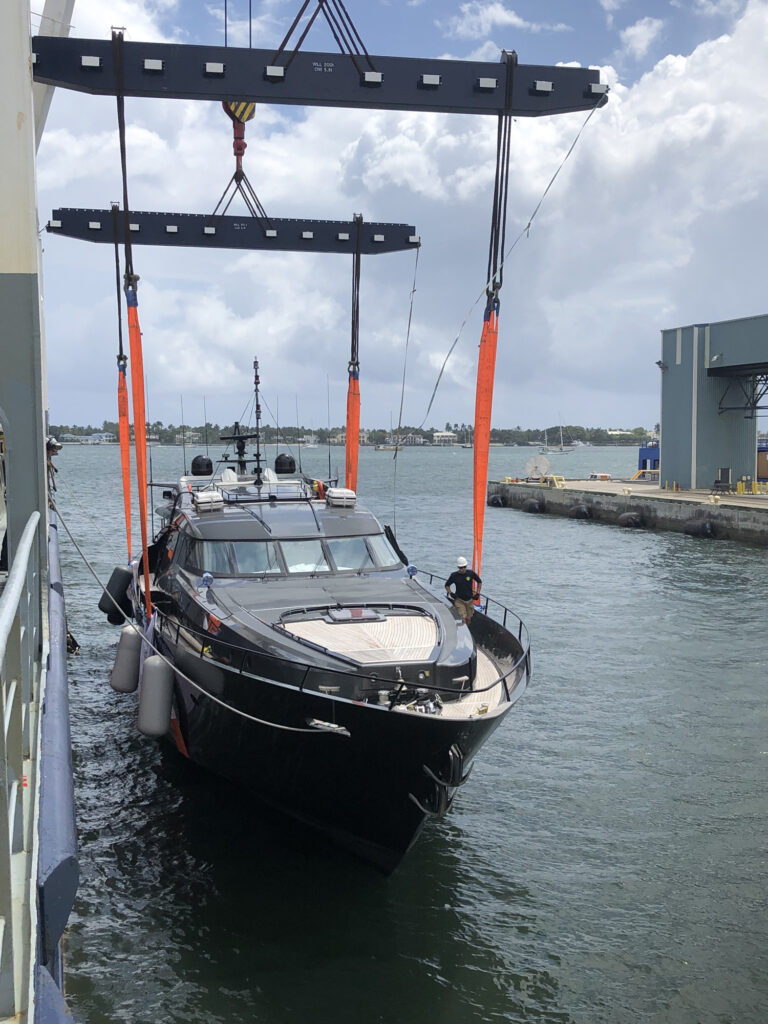
Interview by Kate Calamusa / Photos Provided by FMT
NWY: Florida Maritime Trading (FMT) transports yachts across the world—shipyard to shipyard, buyer to buyer, shipyard to buyer, and personal vessels voyaging to new destinations. How has the company set up their operations in such a way to be able to handle all these different types of transports and passages?
DF: Aside from our good looks and obvious smarts, our model is to provide truly unique, all-in door-to-door service. We take it personally, paying attention to the utmost details of each project and cover all aspects of the transport, including pick up from the factory, yard or marina, delivery of the vessel to its departure port, loading it onboard the shipping container, delivery to final port and, finally, the hand delivery of the yacht to the client’s home or home port. Our model of coordination makes it turnkey for the customer, as we provide extra services like shrink wrap, captains to handle the vessels, customs clearance, and attendance onboard, covering all aspects of yacht transport from marina to ship to marina. We work hard on being always available to our customers; most of our bookings are referrals or repeat customers, we have pretty good retention rate. Many of our clients sign round-trip bookings to and from key trades so they can plan their summers, or the winters chasing sunny days and the best weather. We often see owners spending six months here in Florida, and then the other six in the Med or Asia or the Pacific Northwest.
NWY: Say a boater needs their yacht transported from here in Seattle to a destination in the Mediterranean. How long does setting up a transport like this usually take? And, how would this transport differ from say, shipping a vessel from Seattle just farther down the West Coast to San Diego?
DF: Some routes are more remote and less traveled and require longer to find right cargo combination to position a vessel there. Usually, the most cost-effective way to deliver a yacht to its destination would be to employ a cargo vessel already heading that direction with other cargo. In that example, direct routes from Seattle to the Med are not very common, so we would first move the yacht from Seattle, or perhaps Victoria B.C., to Fort Lauderdale in Florida, then transfer on another vessel heading from Ft Lauderdale to the Med. Ships from the West to East coasts are available every 30-45 days, and ships from Florida to Med are available every 7-15 days. For boaters looking to travel down the coast, we often recommend the following route: Once we load our ship in Victoria, the next stop is Ensenada and La Paz, and a few clients take advantage of taking their yachts to La Paz or Ensenada to enjoy Mexico’s Pacific Coast and California. (This trip will only take 5-9 days versus trip from Victoria to Florida will be about 23 days, for reference.)
Setting up a transport is recommended at least 30 days in advance or more, since space on ships fills up and the ships may run behind schedule depending on canal crossings, port congestions, weather and cargo delays that affect arrival schedules. The rule of thumb is if you want to be in the Med for the charter or vacation season, go a month early in case of delays or other factors. We have been working on developing transports to new markets and promoting sailing in the Great Lakes, Indonesia, the Med, the Adriatic Sea, Turkey, the Pacific Northwest, and even Alaska. It is always fun when clients ask where should we go this summer? We say, close your eyes, spin the globe, and point a finger, and we will make it happen.
NWY: How has your industry changed in recent years? Are there any new innovations that are influencing how you transport vessels?
DF: The yacht transport industry is relatively young compared to the maritime industry, which has been around for centuries. Starting from the 1980s, the yacht transport industry has been continually evolving, with cradle systems and lifting techniques improving, our loadmasters are getting better and more experienced, vessel crews are more familiar with the intricate nature of super cargo handling, and yacht navigation routes have been expanding. With that in mind, here at FMT we have been considering getting our own dedicated vessels to use under long-term vessel charter programs or purchasing cargo ships and have them operate along key routes. It is my dream to own cargo vessels and to put them on dedicated trade lines with cargo holds used for brokers and friends to move other commodities, and decks for yachts to give the yachting community a predictable schedule so they can plan and know that our ships will always come.
ABOUT THE EXPERT: I have been in maritime industry since 2006 when I got started working with my father on our family business located in Chicago. We opened a loading warehouse with loading bays and came up with technique to load 3-5 cars in 40’ containers to ship them worldwide to meet demand. They were mostly high-end cars and collector items. Soon our clients started asking to add boats to their collections of toys, so we reinvented system to load smaller boats in 40’ containers and some larger boats (up to 44’ long) on flat trucks. As our regular clients’ appetites grew for bigger yachts, we started seeing more referrals and requests for moving bigger yachts in 50’-150’ range and FMT started chartering our own lift on vessels to serve demand for loading bigger yachts. I remember it was the fall of 2012 when we hired our fist lift on a vessel operated by SAL Heavy Lift and loaded 3 boats —an Inace 85 trawler, an Azimut 80, and a Magnum 55 speed boat—to transport them from Port Everglades to Korea. Since then, it has become a regular endeavor to charter lift on vessels in key trades for us. In 2022, we had 11 charters, and in 2023, 14 charters, most of which were from Florida to the Med, Turkey and Adriatic and back; the U.S. to the Caribbean and South America; or East-West Coasts transfer here stateside. What I love most about my job is meeting people from all around the world and hearing their stories, passions, and dreams. Each project is unique and has a story to tell, I enjoy learning about why our clients want yachts moved and being part of their dream to make it happen for them whether it is their retirement plan to be in the Caribbean for half of the year, or doing charters to make income. Also, I love it when yachts are delivered safely to their destinations and receiving the videos of happy owners on their way to new adventures. For more information on FMT’s services, visit their booth at this month’s Seattle Boat Show or go to: fmtyachttransport.com.



